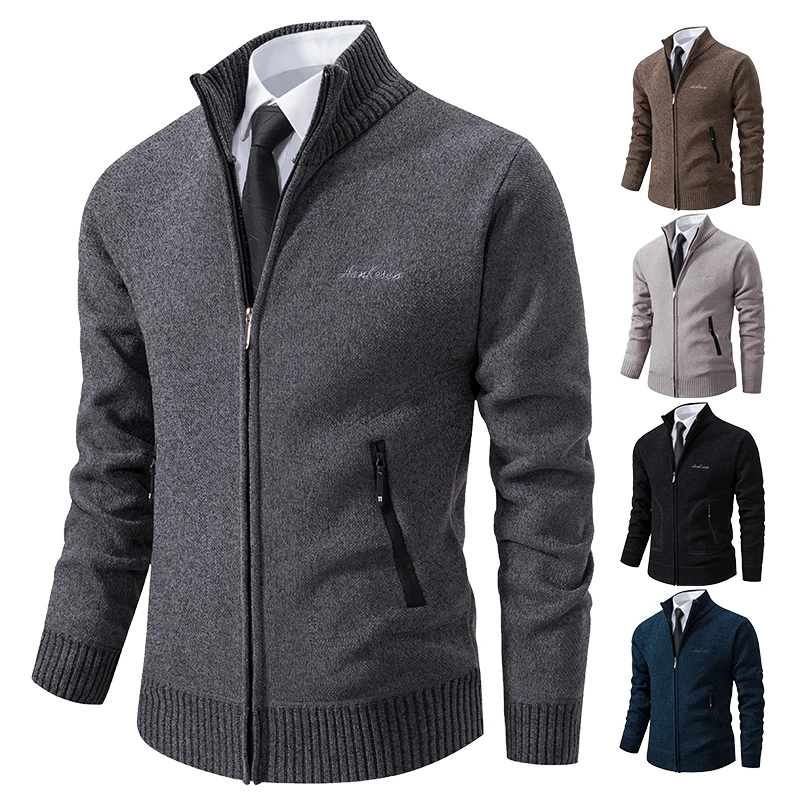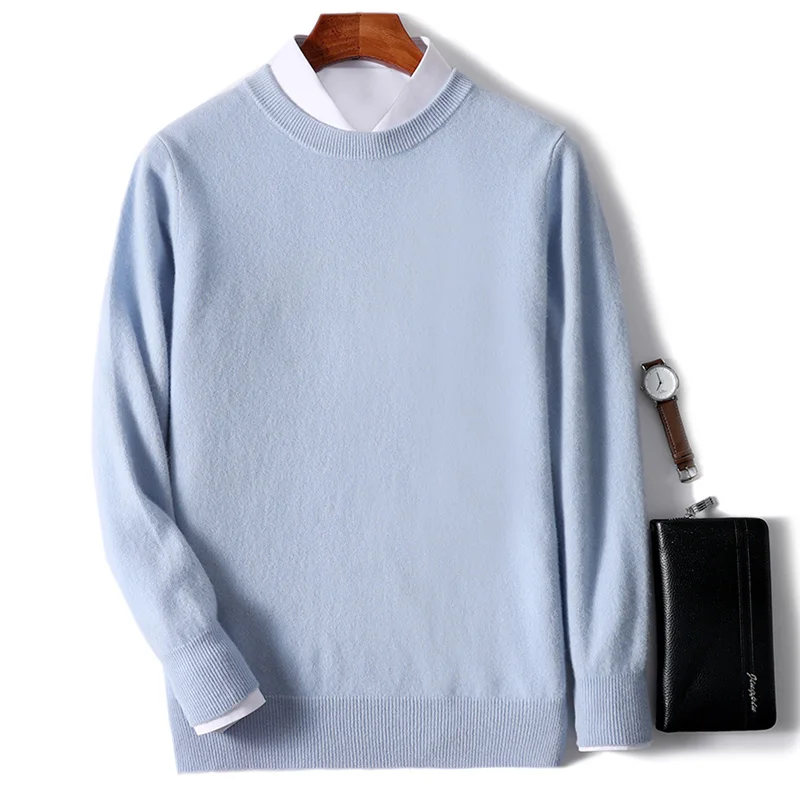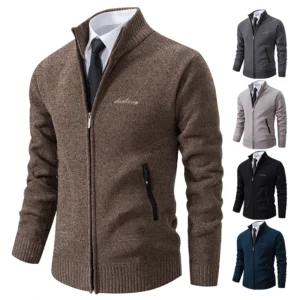Introduction to Cashmere Yarn and Its Unique Properties
Cashmere stands as one of the most coveted luxury fibers in the world. Harvested from the soft undercoat of cashmere goats, this remarkable material offers unparalleled softness combined with extraordinary warmth. What makes cashmere truly exceptional is its unique combination of qualities that no other fiber can match.
Unlike regular wool, true high-quality cashmere fibers are incredibly fine—premium Grade A cashmere fibers measure under 16 microns in diameter and exceed 36mm in length. This exceptional fineness creates the buttery-soft feel against skin that cashmere is famous for. Despite its lightweight nature, cashmere provides remarkable warmth, insulating up to 3-8 times more effectively than regular sheep’s wool.
When starting a luxury project, selecting the right yarn weight becomes crucial for achieving the perfect drape, feel, and functionality. The weight you choose significantly impacts everything from how your finished piece will hang to how warm it will be and how the stitches will appear.
In this guide, we’ll explore the various weights of cashmere yarn available and help you understand which options best suit your specific project needs. Our comprehensive guide to cashmere yarn weight will take you through everything from delicate lace weights to substantial bulky options.
At Estate Cloth, our expertise in premium cashmere fibers ensures we understand the subtle nuances that make each weight category uniquely suited to different applications.
Understanding Yarn Weight Classification Systems
Before diving into cashmere specifics, it’s helpful to understand the standardized yarn weight systems used throughout the crafting world. The Craft Yarn Council has established a numerical classification system that provides consistent terminology across brands and fibers.
Yarn weight is typically measured by determining how many wraps of yarn fit within one inch (WPI or “wraps per inch”). The higher the WPI number, the finer the yarn. Another common term you’ll encounter is “ply,” which refers to the number of strands twisted together to create the final yarn. However, it’s important to note that ply count doesn’t always directly correlate to yarn weight—a concept we’ll explore further later.
For cashmere specifically, weight classifications might behave slightly differently than other fibers due to cashmere’s unique “bloom” factor—the tendency to expand and fill out after washing—and its exceptional drape qualities.
Here’s a simplified breakdown of the standard yarn weight categories:
| Weight Number | Weight Name | WPI Range | Typical Use Cases |
|---|---|---|---|
| #0 | Lace | 32+ | Delicate shawls, fine scarves |
| #1 | Fingering/Sock | 27-32 | Lightweight accessories, intricate patterns |
| #2 | Sport/Baby | 23-26 | Baby items, light sweaters |
| #3 | DK/Light Worsted | 21-24 | All-purpose garments, accessories |
| #4 | Worsted/Aran | 16-20 | Sweaters, outerwear, blankets |
| #5 | Bulky | 12-15 | Quick projects, cold-weather items |
| #6 | Super Bulky | 7-11 | Very quick projects, dramatic texture |
| #7 | Jumbo | <7 | Extreme texture, arm knitting |
Understanding these classifications provides the foundation needed to make informed decisions about cashmere yarn weights from lace to super bulky.
The Unique Characteristics of Cashmere at Different Weights
Cashmere’s inherent properties manifest differently across various weight categories, creating unique experiences for both the crafter and the wearer. The luxurious qualities that make cashmere special—its exceptional softness, warmth, and drape—present themselves in distinct ways depending on the yarn’s thickness.
One of cashmere’s most remarkable characteristics is its bloom factor. After washing and blocking, cashmere fibers tend to expand and fill out, sometimes increasing in volume by up to 30%. This bloom affects different weights in varying degrees:
- Lighter weights (lace, fingering): Bloom creates an ethereal halo effect that fills small gaps between stitches
- Medium weights (sport, DK): Bloom softens stitch definition while maintaining structural integrity
- Heavier weights (worsted, bulky): Bloom significantly increases warmth and cushiness
The fiber processing method also plays a crucial role in how different weights perform. Tightly twisted cashmere yarns offer better stitch definition and durability, while loftier, less-twisted versions provide maximum softness but may pill more readily.
Unlike wool or cotton, cashmere’s extraordinary drape means that even heavier weights can create garments that flow elegantly rather than appearing stiff or bulky. This unique quality makes understanding cashmere ply and thickness essential when selecting yarn for specific projects.
Another important consideration is that cashmere becomes dramatically warmer when worked at a tighter gauge, regardless of weight. This means even lightweight cashmere can create surprisingly warm garments when knitted or crocheted at a dense gauge.

Lace and Fingering Weight Cashmere: Delicate Luxury
Lace (#0) and fingering (#1) weight cashmere represent the most delicate end of the yarn spectrum, offering extraordinary possibilities for creating ethereal, lightweight projects with unmatched elegance.
Lace weight cashmere, with its gossamer-thin profile, creates fabrics of incredible delicacy. When working with this weight, expect:
* Needle/hook size recommendations: US 0-3 (2-3.25mm)
* Typical gauge: 32-40+ stitches per 4 inches
* Exceptional drape and graceful movement
* Maximum yardage per weight of fiber
Fingering weight provides slightly more substance while maintaining delicacy:
* Needle/hook size recommendations: US 1-3 (2.25-3.25mm)
* Typical gauge: 28-32 stitches per 4 inches
* Better stitch definition than lace while still flowing beautifully
* Versatility for detailed patterns and textures
These lighter weights excel in creating:
* Heirloom-quality shawls and wraps
* Delicate scarves with intricate stitch patterns
* Lightweight accessories like gloves or mitts
* Fine baby garments for special occasions
When working with these delicate weights, special considerations apply. Single-ply lace cashmere requires particularly gentle handling to avoid splitting or breaking the strand. For beginners to cashmere, fingering weight often proves more manageable than true lace weight.
The investment in time for lace and fingering weight projects is significant, but the results are truly spectacular—creating garments with unparalleled drape that showcase cashmere’s luxurious qualities. For warm-weather luxury, short-sleeve cashmere sweaters often utilize these lighter weights to create breathable yet sophisticated garments.
Sport and DK Weight Cashmere: Versatile Favorites
Sport (#2) and DK (#3) weight cashmere occupy the sweet spot of versatility in the cashmere world. These medium weights balance practical workability with luxurious drape, making them popular choices for a wide range of projects.
Sport weight cashmere provides:
* Needle/hook size recommendations: US 3-5 (3.25-3.75mm)
* Typical gauge: 24-26 stitches per 4 inches
* Excellent stitch definition with a light, fluid drape
* Faster project completion than fingering while maintaining elegance
DK (Double Knitting) weight offers slightly more substance:
* Needle/hook size recommendations: US 5-7 (3.75-4.5mm)
* Typical gauge: 21-24 stitches per 4 inches
* Perfect balance of drape and structure
* Practical warmth without excessive bulk
These middle-weight options excel for creating:
* Lightweight sweaters and cardigans
* Versatile accessories like hats, scarves, and mittens
* Baby blankets and garments combining softness with practicality
* Year-round garments suitable for layering
Many knitters and crocheters consider these weights the “everyday luxury” options in cashmere. They work up relatively quickly while still showcasing cashmere’s exceptional drape and softness. The balance they strike between luxury, practicality, and project completion time makes them especially popular choices.
For those seeking to create their first cashmere garment, sport or DK weight often represents the ideal starting point. These weights forgive minor tension inconsistencies better than lace weights while still creating a refined fabric. Finding the best yarn weight for cashmere sweaters often leads crafters to these versatile middle-weight options.
Worsted and Bulky Cashmere: Statement Pieces
Worsted (#4) and bulky (#5) weight cashmere deliver dramatic luxury with impressive efficiency. These substantial yarns create plush, statement-making pieces that showcase cashmere’s extraordinary warmth and softness.
Worsted weight cashmere provides:
* Needle/hook size recommendations: US 7-9 (4.5-5.5mm)
* Typical gauge: 16-20 stitches per 4 inches
* Beautiful stitch definition with satisfying texture
* Excellent balance of warmth, durability and drape
Bulky weight offers maximum impact:
* Needle/hook size recommendations: US 9-11 (5.5-8mm)
* Typical gauge: 12-15 stitches per 4 inches
* Dramatic texture and substantial hand-feel
* Quick project completion with luxurious results
These heavier weights excel for creating:
* Cozy winter sweaters and cardigans
* Substantial scarves and cowls
* Warm hats and substantial winter accessories
* Quick gift projects with maximum luxury impact
For those new to working with cashmere, these heavier weights offer significant advantages. Projects work up quickly, and the larger needles or hooks make stitch manipulation easier. The substantial nature of these yarns also means that even simple stitch patterns create impressive textures.
Cost considerations become particularly relevant with these weights, as they use more yarn per project than lighter alternatives. However, the dramatic impact and quick completion time can justify the investment for special projects. Brushed cashmere sweaters often utilize these heavier weights to maximize the plush, cloud-like texture that makes them so desirable.
The Impact of Ply Count on Cashmere Performance
While yarn weight categorizes thickness, the number of plies in cashmere yarn significantly impacts performance, regardless of weight classification. Understanding this relationship helps explain why two cashmere yarns of identical weight might behave quite differently.
Ply count refers to the number of individual strands twisted together to create the final yarn. The relationship between ply and weight isn’t always straightforward:
* A single-ply lace weight and a two-ply fingering weight might have the same thickness
* Two different DK yarns could be constructed as 3-ply or 5-ply with the same overall diameter
This ply construction affects several key characteristics:
| Characteristic | Single-Ply | Multiple-Ply |
|---|---|---|
| Drape | Maximum drape | More structure |
| Durability | Less durable | More durable |
| Stitch Definition | Soft, hazy definition | Crisp, clear definition |
| Pilling Tendency | Higher pilling risk | Lower pilling risk |
| Softness Perception | Immediate softness | Develops softness over time |
The twist level applied during spinning also significantly affects performance. Highly twisted cashmere (whether single or multiple ply) provides:
* Better stitch definition
* Increased durability
* Reduced pilling
* Slightly firmer hand feel
Loosely twisted cashmere offers:
* Maximum softness immediately
* Cloud-like texture
* Enhanced bloom after washing
* Less durability over time
Understanding these distinctions helps explain why some knitters develop strong preferences for specific constructions. For detailed comparisons between options, our guide on 2-ply vs 4-ply cashmere explores these differences in depth.

Essential Swatching Techniques for Cashmere
When working with luxury cashmere yarn, swatching isn’t just recommended—it’s essential. Cashmere’s unique properties, particularly its tendency to bloom after washing, make gauge swatching critical for project success.
Follow these steps for accurate cashmere swatching:
Make a generous swatch: Create a swatch at least 6×6 inches (15×15 cm)—larger than you might typically make for other fibers. This size allows for more accurate measurement and better demonstrates how the fabric will behave.
Include pattern stitches: If your project uses a specific stitch pattern, include this in your swatch to see how cashmere handles the texture.
Measure pre-blocking: Record your gauge measurements before washing to use as a baseline.
Wash and block properly: Treat your swatch exactly as you’ll treat the finished item:
* Soak in lukewarm water with gentle wool wash for 15-20 minutes
* Press out excess water (don’t wring)
* Lay flat to dry completelyMeasure post-blocking: Once completely dry, measure again. Expect significant changes—cashmere typically relaxes and expands after washing.
Test wear behavior: Rub the swatch gently between your hands to assess pilling tendency and softness development.
Common swatching mistakes with cashmere include:
* Skipping the washing/blocking step (crucial for cashmere’s bloom)
* Making swatches too small to accurately measure post-blocking
* Not allowing enough time for complete drying before measuring
These steps might seem time-consuming, but they’re invaluable for choosing the right cashmere ply and determining accurate yardage requirements. A proper swatch reveals how the cashmere will behave in your finished project, potentially saving you from disappointment and wasted investment.
Choosing the Right Tools for Your Cashmere Weight
The tools you select for working with cashmere significantly impact your experience and results. Different weights of cashmere yarn pair best with specific needle or hook materials and designs.
For delicate lace and fingering weights:
* Needle/hook material: Wood or bamboo provides gentle grip that prevents slippery cashmere from sliding
* Needle tips: Sharp tips help navigate intricate stitches without splitting plies
* Surface finish: Slightly textured surfaces provide additional control
* Special considerations: Consider using needles one size larger than recommended for wool to accommodate cashmere’s bloom
For versatile sport and DK weights:
* Needle/hook material: Bamboo, wood or polished metal all work well
* Needle tips: Medium-sharp tips balance ease of entry with split prevention
* Surface finish: Smoother finishes allow for faster working while maintaining control
* Special considerations: Wooden needles warm with use, enhancing cashmere’s softness in your hands
For substantial worsted and bulky weights:
* Needle/hook material: Smooth metal or polished wood prevents drag
* Needle tips: Blunter tips help prevent splitting multiple plies
* Surface finish: Highly polished surfaces facilitate smooth, quick stitching
* Special considerations: Lighter needle materials reduce hand fatigue when working with heavier yarns
Additional tools that enhance the cashmere working experience:
* Yarn bowls with smooth interiors protect delicate cashmere from snags
* Row counters help track progress in complex patterns
* Blocking wires and T-pins enable precise finishing that showcases cashmere’s drape
The relationship between tools and yarn is particularly important with cashmere, as the right pairing enhances both the crafting experience and the finished project. Beautiful examples of how proper tool selection affects finished projects can be seen in our cashmere cardigans collection.
Cashmere Blends: How They Affect Weight Selection
Pure cashmere delivers unmatched luxury, but cashmere blends offer practical alternatives that modify performance while maintaining many desirable qualities. Understanding how different blend fibers interact with cashmere helps inform weight selection.
Silk/Cashmere blends:
* Enhance drape and add subtle luster
* Increase strength and durability
* May reduce warmth slightly
* Work beautifully in lighter weights for shawls and elegant garments
Wool/Cashmere blends:
* Improve memory and bounce
* Reduce cost while maintaining considerable softness
* Increase durability and reduce pilling
* Excel in middle weights for everyday garments
Cotton/Cashmere blends:
* Create lighter-weight options for warmer seasons
* Reduce warmth while maintaining softness
* Add structure and improve stitch definition
* Work well for year-round accessories
Synthetic/Cashmere blends:
* Significantly reduce cost
* Add washability and durability
* Maintain some softness but with less bloom
* Provide more consistent gauge results
When selecting a blend, consider how the additional fiber modifies cashmere’s natural characteristics. Blends typically don’t bloom as dramatically as pure cashmere, which means gauge calculations may be more straightforward. They also often require less delicate care than 100% cashmere.
For everyday luxury that combines practicality with indulgence, blends provide excellent options. Understanding the specific properties of different blends, such as 70 percent wool 30 percent cashmere combinations, helps you make informed decisions for your projects.

Is Thicker Always Warmer? Debunking Cashmere Weight Myths
A common misconception suggests that thicker cashmere automatically provides more warmth. The reality proves more nuanced and sometimes counterintuitive due to cashmere’s unique fiber structure.
Myth: Bulky cashmere is always warmer than lightweight cashmere.
Fact: Warmth depends more on fiber quality, stitch density, and fabric construction than simply on yarn weight.
The science behind cashmere’s exceptional thermal properties explains this phenomenon:
* Cashmere fibers contain microscopic air pockets that trap body heat
* These air pockets function regardless of yarn thickness
* A densely knitted lightweight cashmere can trap more air than a loosely knitted bulky yarn
Other factors affecting warmth include:
* Stitch pattern (closed patterns trap more warmth than lacy ones)
* Fabric density (tighter stitches create warmer fabric)
* Garment design (fit and construction influence heat retention)
* Wearing context (layering affects overall warmth)
In many cases, multiple layers of lightweight cashmere actually outperform a single thick layer for insulation. This explains why experienced cashmere enthusiasts often prefer lightweight versus heavyweight cashmere options for different applications.
For maximum versatility, consider how the finished project will be used. A medium-weight cashmere in a dense stitch pattern often provides optimal warmth-to-weight ratio while maintaining elegant drape—the hallmark of luxury cashmere.
How Does Cashmere Yarn Weight Affect Project Cost?
Understanding the relationship between cashmere yarn weight and project cost helps make informed decisions when investing in luxury fiber. Several factors influence the final cost beyond simply the price per skein.
Lighter weights (lace, fingering) typically:
* Cost more per ounce/gram
* Provide substantially more yardage per unit weight
* Require less total yarn for equivalent projects
* Result in potentially lower overall project costs despite higher per-unit prices
Heavier weights (worsted, bulky) generally:
* Cost less per ounce/gram
* Provide significantly less yardage per unit weight
* Require more total yarn weight for projects
* Result in potentially higher overall project costs despite lower per-unit prices
A practical example illustrates this relationship:
* A lace weight cashmere at $40 per 50g might provide 400+ yards
* A bulky weight at $35 per 50g might provide only 80-100 yards
* A simple scarf requiring 400 yards would cost $40 in lace weight but $140-$175 in bulky
Strategies to maximize luxury while minimizing expense:
* Consider cashmere blends for larger projects
* Use pure cashmere for trim and collars with complementary fibers for the body
* Select lighter weights for projects where drape matters more than thickness
* Choose projects that showcase cashmere’s natural properties without requiring large quantities
Cashmere wool cardigans demonstrate how blending can create luxurious yet cost-effective garments that maintain many of cashmere’s desirable qualities.
Cashmere Wrap Sweaters, Women's Cashmere Pullovers
$75.89 Select options This product has multiple variants. The options may be chosen on the product pageCashmere Cable Knit Sweaters, Women's Cashmere Pullovers
Price range: $111.82 through $112.93 Select options This product has multiple variants. The options may be chosen on the product pageCropped Cashmere Sweaters, Women's Cashmere Pullovers
$155.77 Select options This product has multiple variants. The options may be chosen on the product page- Price range: $102.02 through $109.37 Select options This product has multiple variants. The options may be chosen on the product page
Oversized Cashmere Sweaters, Plus Size Cashmere Sweaters, Women's V-Neck Cashmere Sweaters
$136.87 Select options This product has multiple variants. The options may be chosen on the product pageStriped Cashmere Sweaters, Women's Cashmere Pullovers
$139.68 Select options This product has multiple variants. The options may be chosen on the product page
Cashmere Care Based on Yarn Weight
Proper care ensures your cashmere creations remain beautiful for years, but care requirements vary somewhat based on yarn weight. Understanding these differences helps maintain your investment optimally.
For delicate lace and fingering weight items:
* Wash less frequently (these weights are often used for special occasion pieces)
* Always use mesh laundry bags to prevent tangling
* Block with extra care, using more pins to maintain delicate details
* Store flat rather than hanging to prevent stretching
For versatile sport and DK weight items:
* Wash when necessary rather than on a schedule
* Block to measurements without excessive stretching
* May be gently steamed between washings to refresh
* Can be folded for storage with minimal creasing
For substantial worsted and bulky weight items:
* May require more frequent washing due to typical use in outerwear
* Dry flat on thick towels to absorb excess moisture
* May take significantly longer to dry completely
* Store with cedar products to prevent moth damage in thicker fabrics
For pilling management across weights:
* Lighter weights typically pill less but may show pills more visibly
* Medium weights develop moderate pilling that responds well to gentle removal
* Heavier weights may initially pill more but often “settle” after 1-2 careful removals
Understanding when to choose between thick and light cashmere also means understanding the care implications of each option. Generally, all cashmere benefits from gentle washing in cool water with specialized wool wash, but drying time and blocking requirements vary significantly by weight.
When to Choose Which Weight: Common Projects and Recommendations
Selecting the optimal cashmere weight for specific projects ensures the best combination of appearance, functionality, and value. This guide matches common project types with their ideal cashmere weights.
| Project Type | Recommended Weights | Key Considerations |
|---|---|---|
| Shawls & Wraps | Lace, Fingering, Sport | Prioritize drape, consider yardage requirements |
| Scarves | Any weight depending on style | Lighter for elegance, heavier for warmth |
| Adult Sweaters | Sport, DK, Worsted | Balance drape with warmth needs |
| Baby Items | Fingering, Sport | Softness with minimal weight |
| Hats & Accessories | DK, Worsted | Practical warmth without bulk |
| Home Décor | Varies by item | Consider durability requirements |
Seasonal considerations also influence weight selection:
* Spring/Summer: Lace, fingering weights for breathable luxury
* Fall: Sport, DK weights for versatile layering
* Winter: Worsted, bulky weights for maximum warmth
For gift projects, consider:
* Recipient’s care knowledge (heavier weights often withstand less-than-ideal care better)
* Climate where the item will be used
* Whether the piece is for special occasions or everyday use
* Color preferences (lighter weights show stitch detail better)
For timeless investment pieces like men’s cashmere pullovers, medium weights typically offer the best balance of luxury, performance, and longevity. These versatile weights create garments that can be worn across multiple seasons and maintain their beauty with proper care.
Frequently Asked Questions About Cashmere Yarn Weights
Can I substitute cashmere for wool of the same weight in patterns?
While cashmere and wool may share the same weight classification, cashmere typically creates a drapier fabric with more bloom after blocking. Consider going down one needle size when substituting cashmere for wool to maintain a similar fabric density, and always swatch to confirm.
How do I calculate yardage needs when accounting for cashmere’s bloom?
Purchase approximately 10-15% more yardage than a pattern calls for when using cashmere instead of other fibers. This accounts for both cashmere’s bloom and provides insurance against potential shortages, as dye lots can vary significantly.
Does cashmere pill more at certain weights?
Single-ply cashmere tends to pill more regardless of weight. However, lighter weights often show pills more prominently due to their delicate fabric structure. Higher-quality cashmere with longer fibers pills less across all weights.
How can I tell if cashmere is high quality regardless of weight?
Quality cashmere feels incredibly soft, has minimal guard hairs, and produces little shedding. When rubbed between fingers, it should warm quickly and feel smooth rather than scratchy. Superior cashmere has a subtle luster rather than a shiny appearance, regardless of whether it’s used in 100 percent cashmere sweaters or blends.
Is cashmere suitable for beginners?
Beginners may want to start with DK or worsted weight cashmere, which behaves more predictably than very fine or very heavy weights. Consider beginning with a small project like a cowl or hat before committing to larger pieces.
How does cashmere yarn weight affect garment longevity?
With proper care, all weights of cashmere can last for decades. However, tightly-twisted multiple-ply yarns in medium weights often provide the best combination of luxury and longevity for everyday garments.







